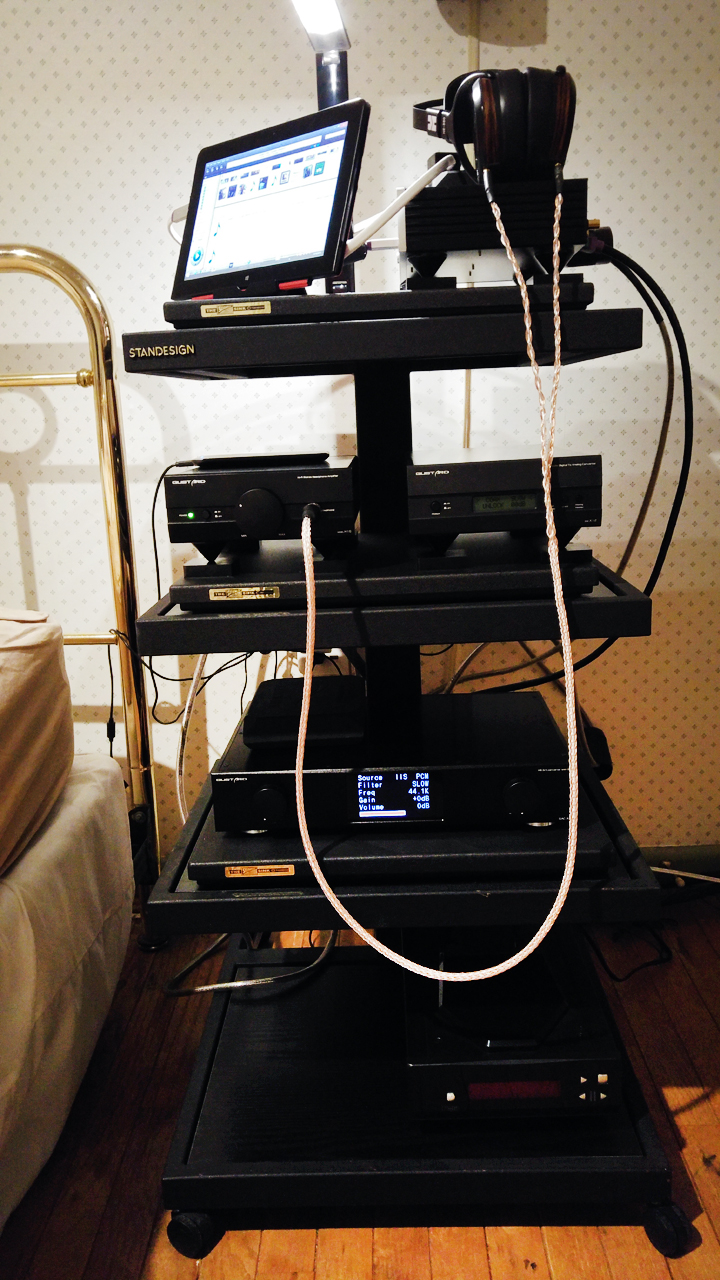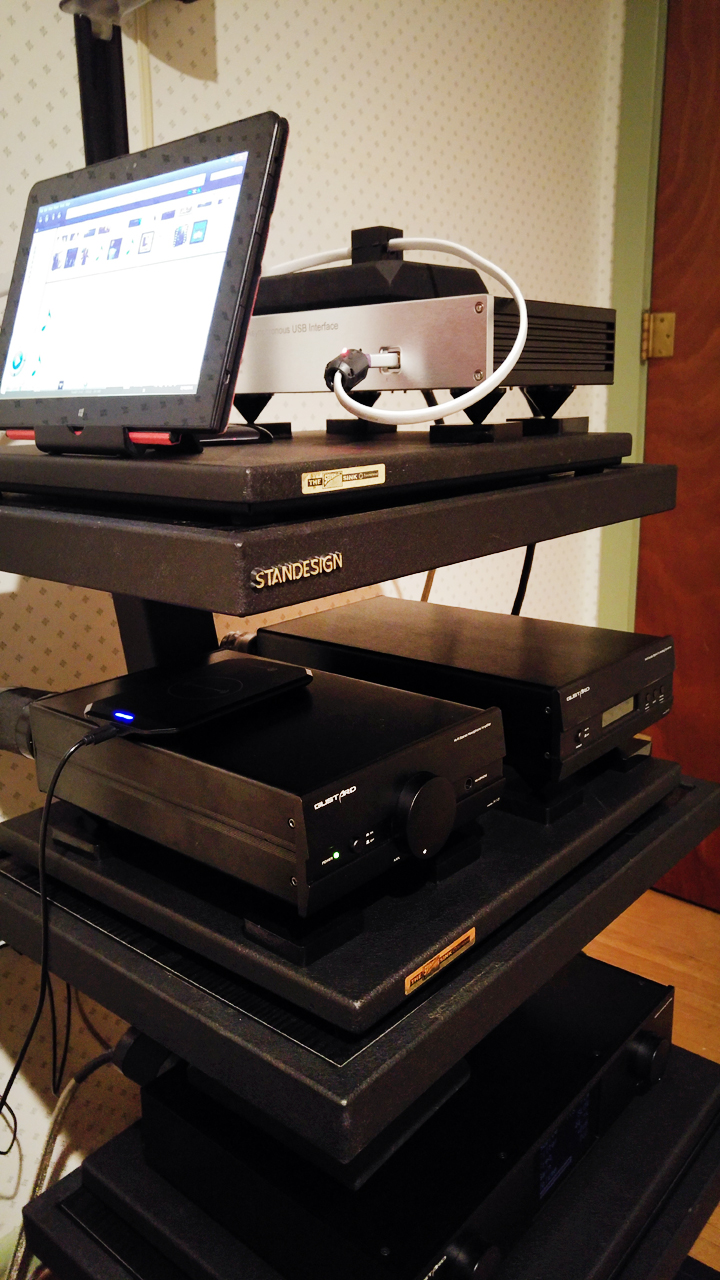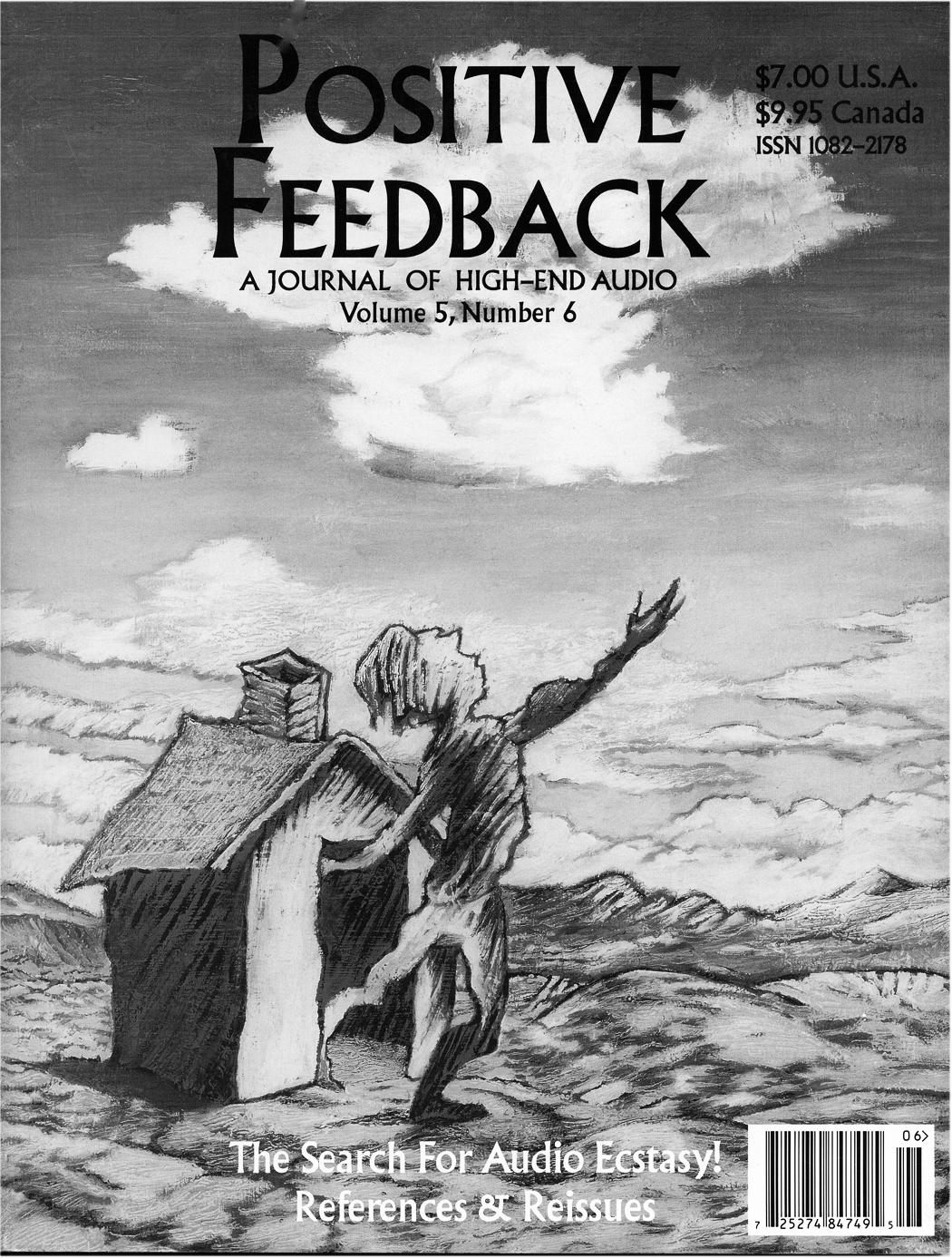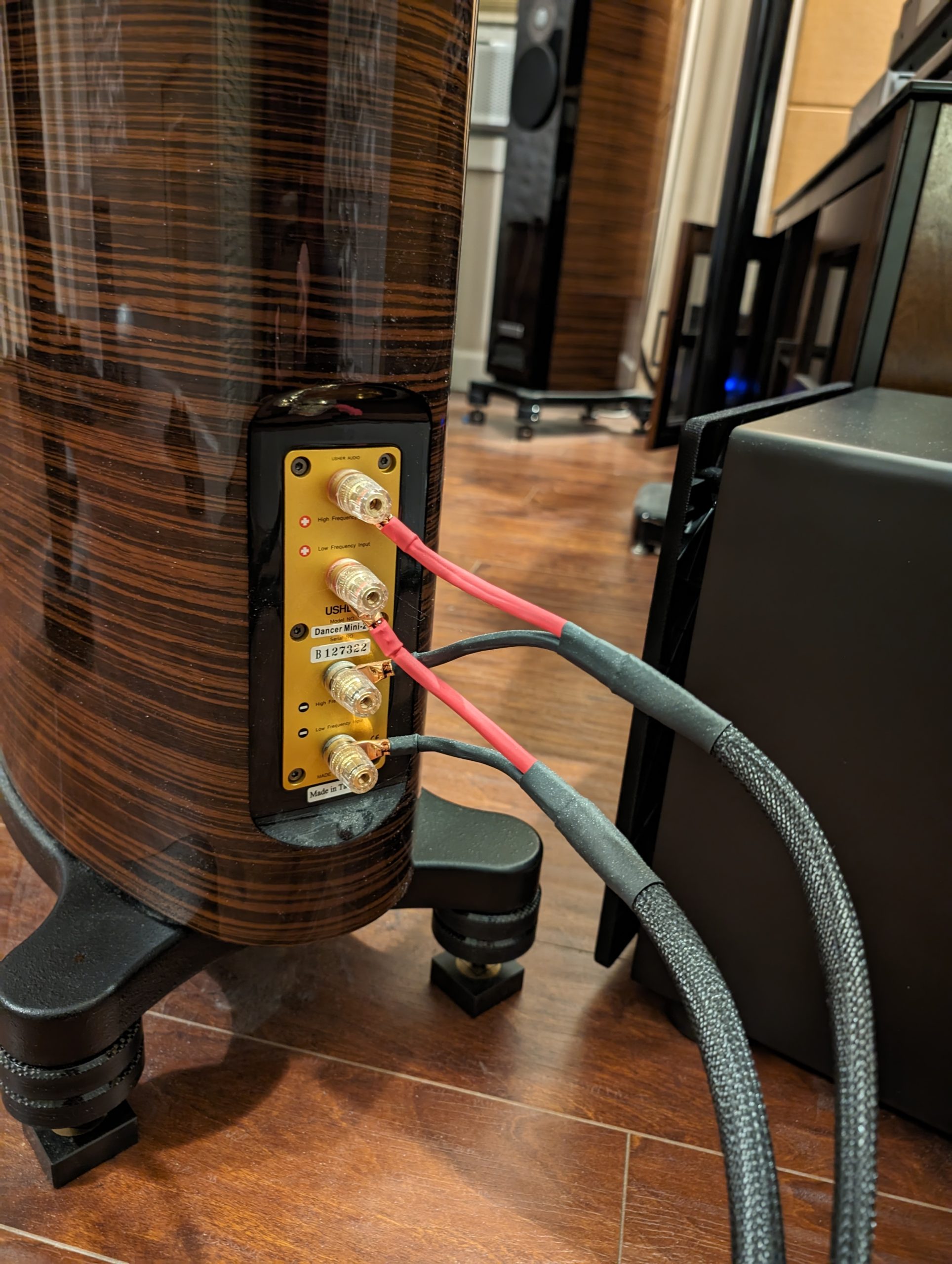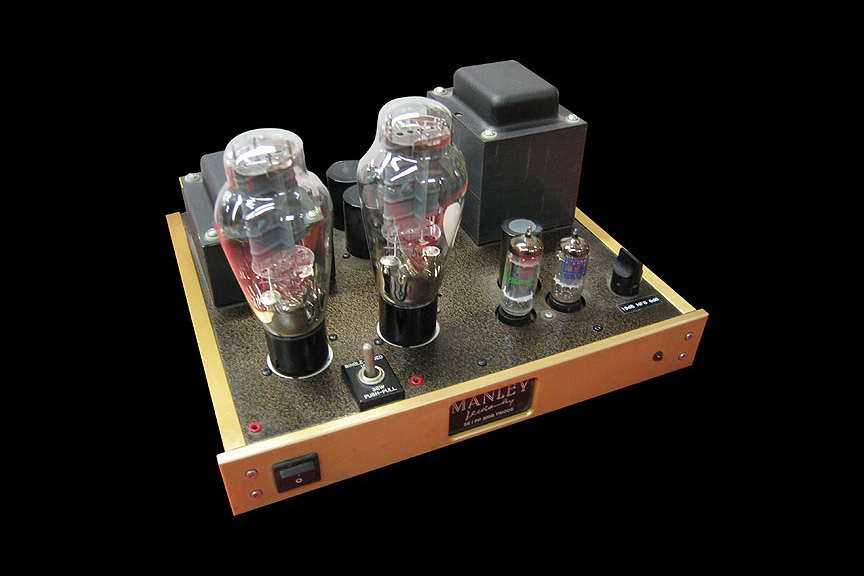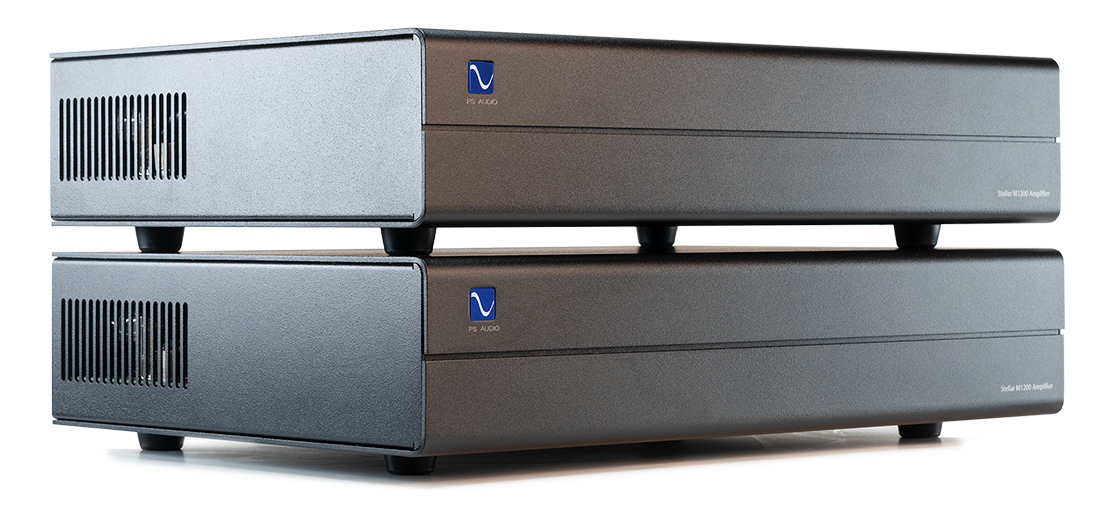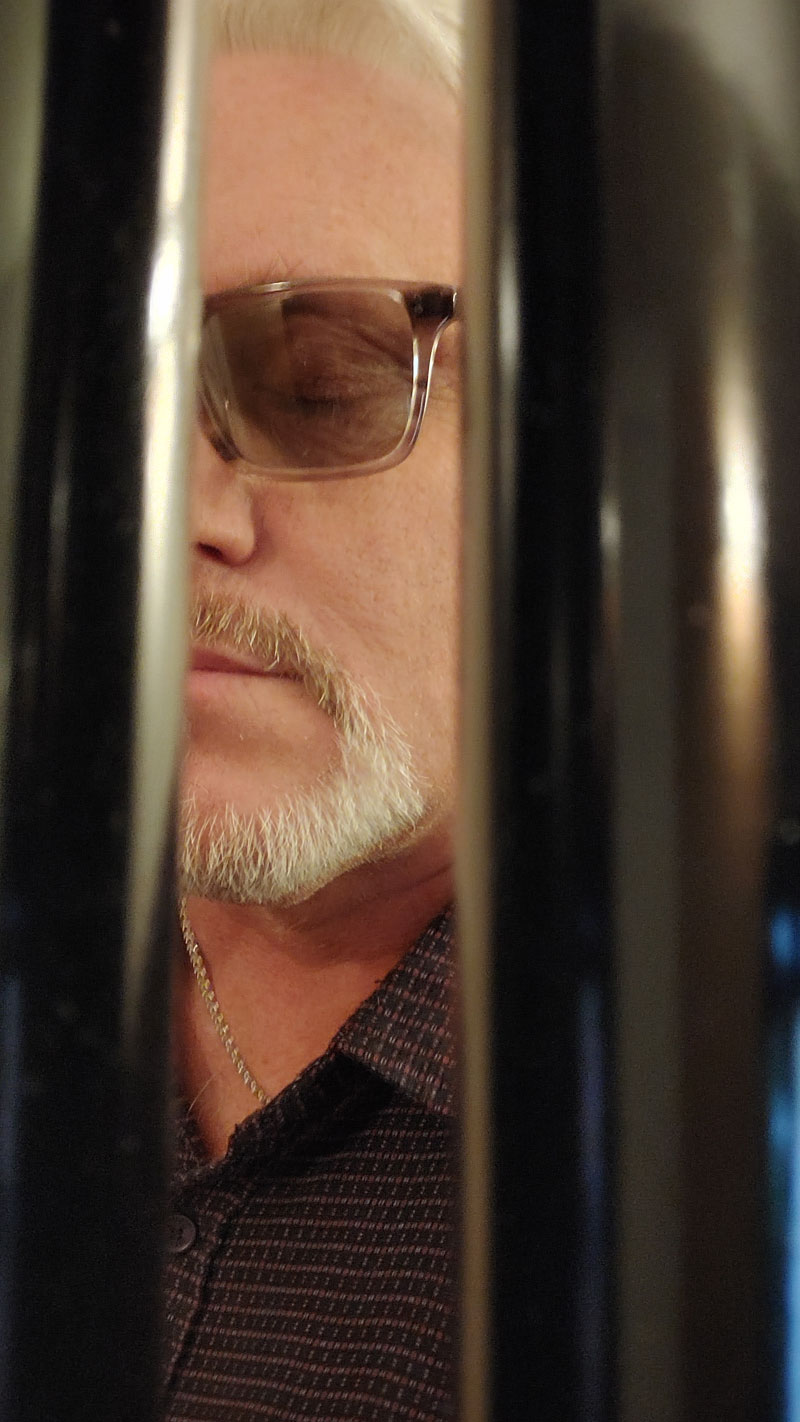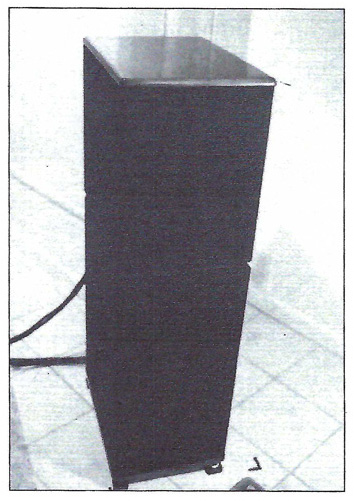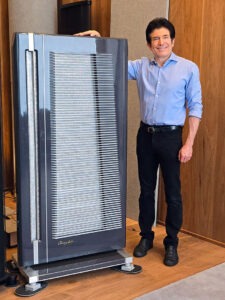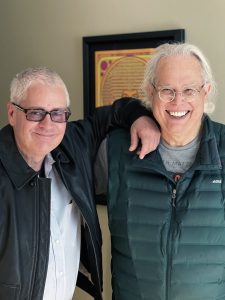I'm baaaack! Hey, this place looks really different. I like what you've done with the wallpaper and the new carpets. You look great too. You've gained a little weight and put on a touch of grey but I must say, it looks good on you—very distinguished.
It's been thirteen years since I last graced the pages of Positive Feedback. My name had remained on the masthead as legal counsel, but I most assuredly have been MIA. A lot has happened personally and professionally in that time, and I'd rather not get into the details of why I really left the world of high–end audio. Let's just say that I became very disillusioned and disappointed in the hobby because of the actions of a select few. In case you're wondering, that select few did not include anyone associated with Positive Feedback. Our intrepid editor in chief, David Robinson, has always been a dear brother to me and he has, throughout this extended hiatus, graciously extended an open invitation for my return.
My decision to return to the world of audio punditry was in no small part due to my recent forays into the niche of personal/headphone audio. Starting with an affordable DAP (Hidizs AP100) and an equally affordable and over-achieving IEM (Havi B3), I was shocked by how good the music could sound on the cheap. I was hooked. I started reading articles and joined in on the chats over at Head-fi.org. Before long, I had tried out several well-regarded full-size headphones, and a number of DACs and headphone amps. In six months' time, I had put together a compact headphone system that rivaled anything I had heard from my big rig in my dedicated listening room.
I've been having so much fun with this that I've decided to make personal/headphone audio my main gig. Sadly, what this means for my friends and associates is that there will no longer be the group listening sessions that were a frequent occurrence at Stu's Place. Stu's Place now features a bedside headphone rig, and the space is quite limited between my ears.
Headphones present an entirely new experience in critical listening. I have had to do a lot of recalibrating to get a handle on it and be in any kind of position to "review" this new gear. I have to give a shout out to my new friends on the Gustard H10 thread at head-fi.org for encouraging me and giving me the enthusiasm to get back into the game. Over there I am known as "Captain Guinea Pig of the SS Gustard," and friends there are known as the "swabbies." This jaunty pirate theme and its attendant silliness evolved naturally and as I wrote there to the 'swabbies," hopefully it is self-deprecating enough to keep me, and those I interact with, from becoming dreaded Hi-Fi Pharisees. I had summarized my headphone listening/learning experience there, and I think it bears repeating for our PF readers:
"We all have unique personalities and gifts and I believe that holds true with our audio perceptions. There will be audiophiles that are more sensitive to bass lines, some very sensitive to the high frequencies represented by strings and cymbals and still others, like me, who are most effected by spatial cues. Absent some real physiological ear/brain issues, I don't hold to the belief that there are people who are "golden ears" and others who are "tin ears," or in the case of my friend Bill Brassington, "brass ears." I think most everyone can attain the same level of listening acuity when they practice and "learn" the skill. Most often we use visual expressions to describe are audio soundscape. I think that is natural as sight is a very dominant sense for most of us. Reviewers often paint a word picture of what they hear as the spatial cues in the recording. We hear the reverberations off the walls and get a sense of the width and depth of the recording venue. We talk about images as being round pulsating cylinders of sound and sense the space around and between those images. When I listened to loudspeakers, I picked this stuff up much better if I had my eyes open and actually imagined seeing precisely what I was hearing. When I recently got into headphone listening, I had to re–learn much of my skills, it was a very different perspective– trying to conjure up a real soundscape from what was now between my ears and in my head instead of displayed in front of me. This is where it gets interesting...
To the uninitiated, this was all very foreign and weird. They just couldn't hear the things I did. Many times I had had non-audiophiles visit my listening room and they were completely flummoxed by my play by play descriptions. I soon learned that with a little guidance and effort, most, if not all would get it. It was so often such a Eureka! moment, that I started to describe the "learned response" and breakthrough moment in visual terms like learning how to look properly at 3D stereograms. Those 2D pictures would pop out and take 3D form when you learned to look past the surface and focus more on a space behind the surface of the page. Once you get the technique and it pops into place, it gets easier and easier each time until it is practically automatic when viewing stereograms. I think the same sort of thing happens with our listening abilities. I would tell my visitors about the 3D stereograms and then say that hearing a 3D soundscape was much the same. I would tell my visitor to open their eyes and imagine that they are seeing the real musicians in the room. Sometimes I would have them point to where they hear each instrument coming from. Then after relaxing and enjoying this experience for some time, I would ask them to now listen past the musicians and try to hear the faint sound of the reverberations off the walls. Once they thought they had that, I would tell them to try to hear the silent space between and around each instrument. After some time and relaxation (trying too hard never works with this, just like you have to somewhat de–focus to get the 3D stereogram trick to work) quite often I would hear exclamations of "Oh wow, now I hear it like you initially described." Obviously this process works best with great recordings done in a real hall rather than panned stuff done in studio booths.
So back to my headphone experience.... I had to re–learn the stereogram listening trick specifically for the headphone perspective. It was very disconcerting at first and I found that with headphones that my familiar open eyes listening completely threw me off. You can't turn your eyes around and look inside your head. It took me a few weeks to acclimate and get my soundstage/imaging chops back in form.
That was rather long winded, but I have been wanting to write something about this for quite some time now. In the specific case of op-amp listening (which we call "swabbing" with the Gustard H10 amplifier), I have found the best approach for me is to start off not listening for anything specific. I just relax and get the gestalt experience. My subconscious seems to know more than I think it does. I often get a fairly strong initial impression from this. Then I go back with familiar tracks and listen specifically to soundstage and imaging characteristics. With an op-amp like the AD797BRZ this characteristic really stood out for me. Once I get that analysis nailed, I will move on to listening to low bass lines, preferably upright bass, kettle drums and pedal organs and then the high treble, preferably violins, cymbals and brushed snares. For midrange analysis I use human voice as my reference. As I have said before, I am a real soundstage/imaging whore, so I do that analysis first since it is easiest for me and it will make or break an op–amp change without going much further."
As part of my re-introduction to PF readers, I would like to pull out and dust off a commentary I wrote to an article that appeared in Positive Feedback in the summer of 1995, Vol. 5, No. 6. The article was written by Herb Reichert, back when he was associated with Audio Note and was called "The Third Eye: Audio Connoisseurship for the Next Century." In my response, I set forth what I considered to be my manifesto on the various roles of audio reviewers, and my role in particular. It's been twenty years and my position and "role" in audio journalism hasn't changed a bit.
A response to Herb Reichert's "The Third Eye: Audio Connoisseurship for the Next Century"
Hey Herb, what's with "the third eye?" Where I come from that's a huge zit in the middle of your forehead. Heheheh...with that as an opener, I'm sure you've got me pegged as one of those new guard know nothin' reviewers who wouldn't know musical passion if it did grow in the middle of their forehead. Well, actually, since I've had some great chats with Mr. Reichert, it should come as no surprise that I found a lot in his article that I could embrace. Even though I am one of those new generation reviewers that Herb criticizes in his article, I am not offended in the least by his comments. There is much there to chew on and I have always believed that exhortation is a good thing, particularly when you respect the person doing the exhorting.
I concur that the emotional content of music is conveyed primarily in the small tempo and pitch changes. I am particularly pleased with Herb's statement that "the magic of hi–fi appears to lie in the nearly unexplored micro-world." He has more precisely described in a poetic form what I attempted to "quantify" in the Tube Fest series as "micro–dynamics." In that piece I described it as follows:
Micro–Dynamics: These are the subtle changes in loudness and emphasis that so often lend emotion and interpretative expression to a familiar piece of music. It's a grin as opposed to a smile. A curling of the lip, as opposed to a snarl.
Not a terribly precise definition, but in its broadness, I think one could easily find a home for the emotional effects of pitch and tempo that Herb has so artfully described.
I'd like to comment on the issue of reviewer credentials that herb has raised. Herb criticizes most reviewers as "aspiring to aesthetic understanding...but only have their hobby experience or their audio salon sales credentials as preparation for the job." This begs the following question: what then are the proper credentials for audio reviewing?
Does a "proper" audio reviewer require a background as a professional musician, or an E.E. degree? No, I don't think so. To borrow one of Herb's favorite analogies, a good art critic does not need to be an artist himself to appreciate the content and style expressed in a work of art.
Does the audio reviewer need to spend a certain amount of time on the threshing floor of musical awareness to separate and burn off the chaff? Yes, I would think that would be a good thing—but how do you really know when only the pure wheat remains? If I am to understand Mr. Reichert correctly, this can be readily determined by a reviewer's writing style and his choice of expressive language. Now, this seems fair enough, but I think if you look a little deeper you will discover the Achilles heal in this assumption.
You must ask yourself this question: does a writer always use a style that most clearly reflects his own sensibilities? The obvious answer, to me anyway, is no. Good writing is often designed, or crafted, to effectively communicate to a chosen group of readers and the writer himself may not be part of that group. An article written about a new surgical technique which is to appear in Time magazine will certainly be written differently than one which is to appear in the Journal of the American Medical Association and even more differently than the one that is to appear in the Annals of Thoracic Surgery. The intended readers have much different levels of knowledge on the subject matter and so the writing style is tailored to communicate properly with the expected knowledge base of each target group.
The knowledge base of audiophiles and specifically those kindred souls who read Positive Feedback magazine also varies widely. In Mr. Reichert's terminology, we would say that there are many levels of "musical connoisseurship" represented by our readers. I have no statistics to back this up, but I think it safe to assume that the majority of our readers have not reached the level of audio connoisseurship that Mr. Reichert has attained. It is for this "majority" that Stu's Place is intended and quite frankly, because I consider myself an expert on only one subject—what Stu likes—I feel a closer association with this group.
More than a few readers have commented to me that they would never have guessed I was a lawyer from my writing style. Well, to this I say "Hallelujah!" I get pretty tired of the dry stuff during the day and as I have said before in these pages, I like to let my hair down a bit when writing about audio. If I wanted to write philosophically laden pieces in a pedantic style, I certainly could. Oh, I think I have the intellectual fire power to do that quite handily. But I choose not to because I think that high–end audio should be fun and accessible to everyone. I do sometimes make poetic or biblical illusions in my reviews for the purpose of pointing to a higher plane, but I don't think that that is my true calling, at least not now. There are others who can do a far better job with the "highbrow" style. Their work is important and points the way to a deeper appreciation of music for those who wish to take that journey. I'll leave that field for them to plow.
I never want my articles to come off as being pompous, overbearing, or written in such a way that the reader is forced to a level that he cannot relate to. If I were to concentrate on the emotional impact of music through a particular component and how it moves me spiritually, do you really think that this would be more meaningful to these readers who, for the most part, want to be entertained while gaining insights on which equipment they may wish to audition? I don't think so.
Why do you suppose that Sam Tellig was the most popular writer at Stereophile according to their readers' survey? Because his articles were deep and philosophical?—no, not hardly. It was because his style was fun and easy to read, with anecdotal references to Lars and Brass Ear, etc., while still being informative. In his constant ribbing of his friends, Sam made it clear that we really shouldn't take this audio thing too seriously.
Now for a brief comment on Mr. Reichert's criticism of the use of photographic allusion in reviews. For this, I will stand once more on my assertion that the language used by a writer should be meaningful to his intended audience. For my intended audience, visual metaphors are readily understood and convey meaning in a very accessible way (there's that word again). I'm afraid there may be something wrong with Mr. Reichert's logic when he criticizes the use of such "quantitative" expressions because they make the reviewer "unassailable." Would Mr. Reichert have me believe that telling the readers how I "feel" about the music played through a given piece of equipment is more assailable? I can't think of anything more subjective than the "feelings" one derives from music. By substituting emotional responses, like "a brooding bass" or "the sound of the strings made me giddy" for such "quantitative" expressions as "resolution" and "focus," I believe Mr. Reichert has compounded the problem of reader verification. Now, not only does the reader have to have the same room acoustics and system to duplicate the reviewer's experience, he's got to have the same brain chemistry or upbringing–– depending upon whether you consider this emotional response to be the result of nature or nurture.
I'm not doing too well on Mr. Reichert's score card. I'm afraid I'm also one of those persons who do place a great deal of emphasis on the "audiophile software packaging effect" known as stereo. O.K. Herb, call me "sophomoric," but I rarely enjoy music that doesn't envelope me and provide me with a few fleeting moments where I believe that I am there sharing in the music making when and where it was happening. I personally can not achieve this state of consciousness with poor quality recordings and very rarely with monaural recordings. Does that mean that such recordings are without poetry and romance, or that someone else, like Mr. Reichert, could not find great pleasure in them? Certainly not. I just happen to have this thing about experiencing the physical time and space. If that is key to my musical enjoyment, or musical ecstasy, as my friend Harvey Rosenburg is want to say, shouldn't I embrace that fact? Should I be disqualified from doing audio equipment reviews because of this base, unenlightened pleasure I seek? If that be the case, we should probably cancel the subscriptions of the vast majority of Positive Feedback readers, who I believe share my passion for this tawdry delight.
We need people like Mr.Reichert and the reviewers who have the "exquisite temperament" to point the way to a higher level of audio consciousness, but let's not forget that there are many paths and levels of musical enjoyment. We need other voices that speak to the fun and camaraderie of audio...and that, well, don't take all of this too seriously. I am concerned that a wholesale move in Mr. Reichert's proposed direction would make high–end audio even more elitist and inaccessible at a time when we need to be practicing inclusion rather than exclusion, if we are to see our numbers grow in the next generation.
Let me close my thoughts by turning to Harvey Rosenburg's "audio tribe" analogy.
We need the medicine men in our tribe—those that can inspire awe and draw some of the neophytes to a much higher level of musical ecstasy. But let us not take lightly the role of the storyteller who brings the tribe together around the evening fire to share experiences, laughter and to instruct the members in the more simple ways of the tribe.
Yep, I'm one of the Storytellers—so bring along a good stick and your marshmallows and I'll keep the coals hot at Stu's Place.
Though twenty years have passed, this is still very much who I am and my approach to audio journalism. I enjoy sharing my personal journey with friends—like having the readers look over my shoulder and join me in the fun and excitement of new discoveries. The operative words here are "Personal" and "FUN." This is my journey and I am only out to satisfy my own ears whilst hopefully having plenty of fun in the process.
The one thing that has changed in the twenty years since this response was written is Mr. Reichert's role in the audio community. Herb now writes for Stereophile and has become quite an accomplished "storyteller"/ reviewer in his own right. The few reviews of his that I have read have been quite impressive and a lot of fun to read. My hat is off to him.
It's great to be back and I look forward to sharing my thoughts on some outstanding headphone gear. In house currently is the ALO Continental, some ALO headphone cables, an outstanding USB cable from Audience, some tasty interconnects from Analysis Plus and some amazing affordable over-achievers from Chinese newcomers Gustard and Tanly Audio.
Stay tuned!




